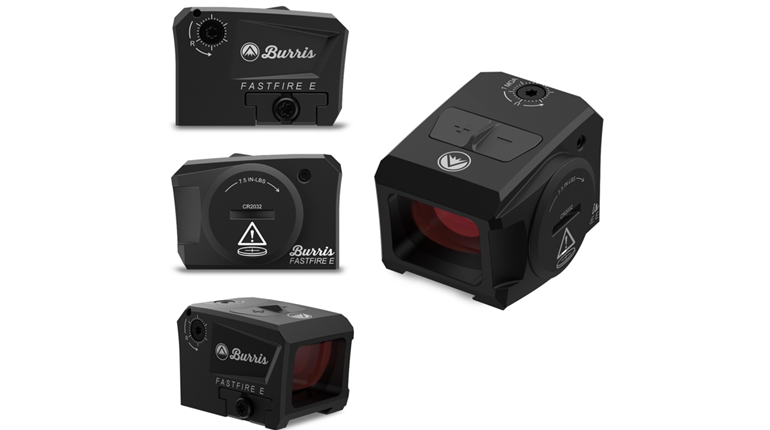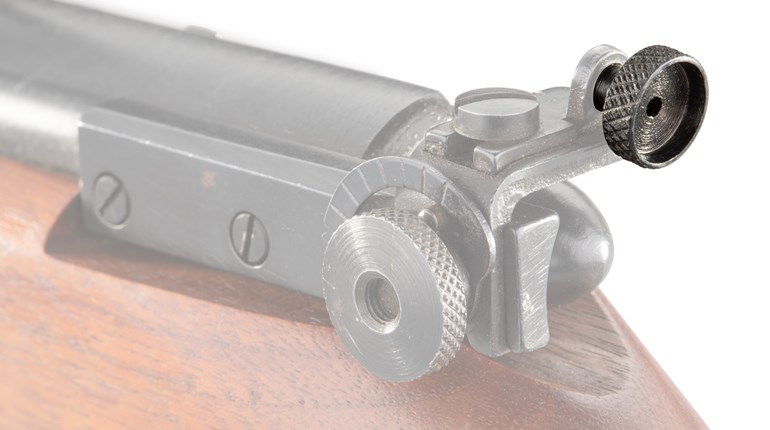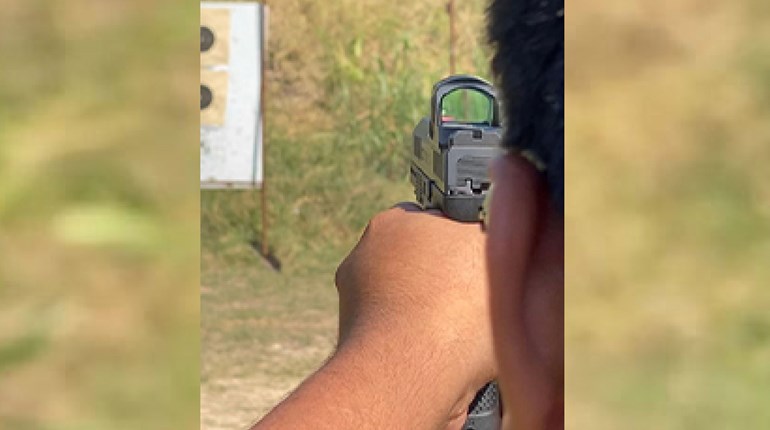
Redfield introduced the CounterStrike green/red-dot scope with laser sight at SHOT Show this past January, immediately creating quite the buzz. An optic—with a laser—for around $200? From a trusted brand? The CounterStrike is one of the rare cases where it might sound too good to be true, but it really is what it seems.

I received one of the highly sought-after models a few weeks ago, and was quite impressed by the level of quality and workmanship Redfield puts into what other manufacturers would consider an entry-level sight. The controls are obviously well-designed and intuitive—it didn't take much to figure out how everything worked. The finish on the unit is top-notch, the glass is clean and clear, and the scope is waterproof and fogproof. What's more, the lens covers are all tethered, so you won't lose them.
The CounterStrike takes a single CR123A battery and claims 5,000 hours of run time on the lowest setting and 500 on the highest (although there's no run time provided for the laser). It comes with Redfield's "No Excuses" warranty—two years on the electronics and lifetime coverage on the rest of the optic. It has an integral MIL-STD 1913/Picatinny rail mount and a single-point mounting screw. (Since it's a single-point mount, it will work on a Weaver rail as well.)
One of the first things I noticed was the CounterStrike is not designed for the standard AR-15 front sight. I had to swap the A2-style gas block for a low-profile version to allow the laser to reach the target without interference. Using the scope on a flattop rifle shouldn't be a problem, but check the clearance to be certain. On ARs with flip-up sights or elevated mounting rails, installation is as simple as turning a screwdriver.
Once installed—and the single mounting piece makes installation an absolute breeze—the sight stays firmly in place. It held zero during repeated range trips. The adjustments are made in .5-MOA clicks, which can be dialed with either a screwdriver or a dime, depending on what's more handy. The clicks are well-defined and audible, even with hearing protection on, and move the point of impact precisely as expected.
Dialing in the CounterStrike took less than one full magazine, and changing the zero distance from 25 yards to 50 yards required a minimum of testing. Any difficulties in zeroing the sight at either distance were easily explained as operator error, and in the end yielded a very satisfying 1.5-inch, five-shot group at 50 yards. That's 3 MOA right there, using steel-case, bargain ammunition shot out of a 16-inch-barreled carbine.
Controls on the CounterStrike are intuitive and simple to use. The dot is turned on by pressing the power button, and its color can be switched between red and green by a quick press of the same. Changing intensity is as simple as pressing and holding the clearly marked "+" or "-" buttons, and the unit powers off by holding the power button for a few seconds. If there's anything I'd change or add, it would be some sort of indication when the limit of intensity on either end is reached—while the lower end is pretty clear (you can't see the dot any more), the upper end gets brighter and brighter until it doesn't—so it would be nice to have some sort of reference here.

The laser has its own controls, with elevation on top of the laser unit and windage to the side. Knobs for elevation and windage are locked in place with set screws that need to be loosened before making adjustments and then tightened once finished. The laser comes dialed in pretty much spot-on with the green/red dot. Once the green/red dot was zeroed at 50 yards, the laser was visible about an inch or so below the dot at close range (25 to 50 feet). One of the benefits of having the option of both a red and green dot is the dot color can be changed to contrast with the red laser's dot on the target.
While the red laser is not meant for bright, sunshiny days, it was still visible on target in the July sun at 25 yards. That's pretty darn good by any measure. In low-light situations, it's visible for pretty much as far as you can see. Indoors, the dot is visible out to at least 25 yards (I couldn't find an indoor range with a greater distance).
The dot and laser can be zeroed for different ranges. In my case, I opted for 50 yards with the dot and 50 feet with the laser. Anything more than 50 yards, and my eyes start needing magnified optics, while anything inside of 50 feet is covered just fine by the laser.
Overall, I think the CounterStrike is a real winner. It is a solid, mid-level green/red-dot sight at an entry-level price. It mounts securely and easily to common rails, and adjustments come in precise, clear increments. The dot is very easy to see and place on target in either red or green mode, and it delivered accuracy at least as good as promised. It's a nice piece of versatile hardware at a price that won't break the bank.
Specifications
Manufacturer: Redfield; 877-798-9686, redfield.com
Magnification: 1X
Objective Lens Diameter: 30 mm
Adjustability: 90 MOA
Reticles: Red or green 4-MOA dot
Illumination: 11 settings, including two night-vision capable
Eye Relief: Unlimited
Tube Diameter: 30 mm
Laser: Class 3A; 5 mW red beam
Length: 5.9 inches
Weight: 14.8 ounces
MSRP: $224.99






































